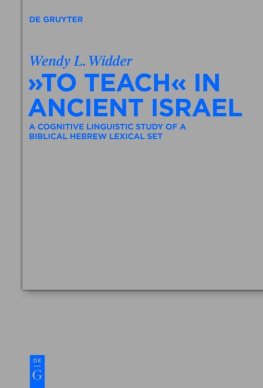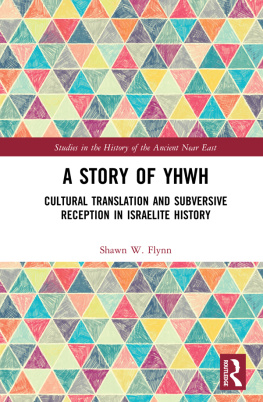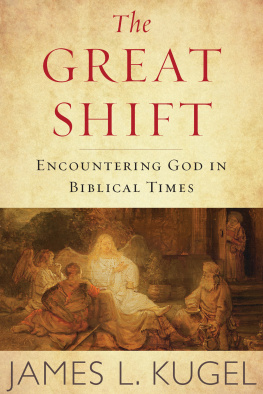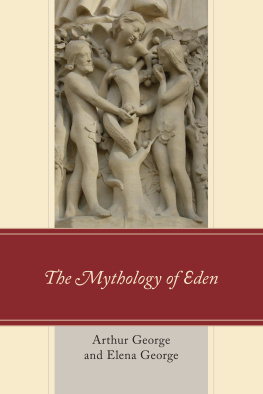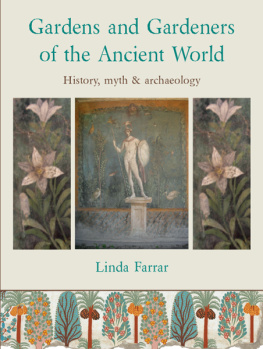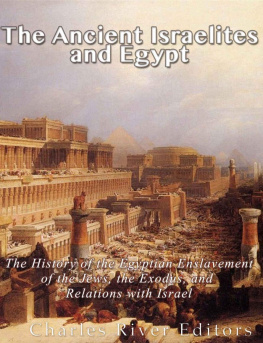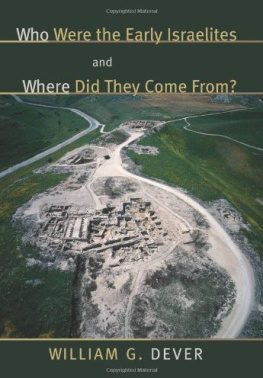What
Really
Happened
in the
Garden
of Eden?
What
Really
Happened
in the
Garden
of Eden?
ZIONY ZEVIT

Copyright 2013 by Ziony Zevit.
All rights reserved.
This book may not be reproduced, in whole or in part, including illustrations, in any form (beyond that copying permitted by Sections 107 and 108 of the U.S. Copyright Law and except by reviewers for the public press), without written permission from the publishers.
Yale University Press books may be purchased in quantity for educational, business, or promotional use. For information, please e-mail sales.press@yale.edu (U.S. office) or sales@yaleup.co.uk (U.K. office).
Scripture quotations identified as NJPS throughout this book are reprinted from the Tanakh: The Holy Scriptures by permission of the University of Nebraska Press. Copyright 1985
The Jewish Publication Society, Philadelphia.
Designed by Mary Valencia.
Set in Minion and Myriad type by Westchester Book Group, Danbury, Connecticut.
Printed in the United States of America.
Library of Congress Cataloging-in-Publication Data
Zevit, Ziony.
What really happened in the Garden of Eden? / Ziony Zevit.
pages cm
Includes bibliographical references and index.
ISBN 978-0-300-17869-2 (cloth : alk. paper) 1. Eden. 2. Fall of man. 3. Bible.
Genesis IIIIICriticism, interpretation, etc. I. Title.
BS1237.Z48 2013
222.1106dc23
2013017554
A catalogue record for this book is available from the British Library.
This paper meets the requirements of ANSI/NISO Z39.481992 (Permanence of Paper).
10 9 8 7 6 5 4 3 2 1
for
Zehava and Eli, Noam and Ayelet, Yonatan and Reut
whose eyes open anew each day and
who see more than what appears
Contents
A Preface about Really
Even people who have never read the Garden story in Genesis know its essential elements and are familiar with its interpretation as the story of the Fall. God first made Adam out of the dust of the earth and placed him in the idyllic Garden of Eden as a caretaker. Later, he made Eve out of Adams rib and presented her to Adam as a helpmate. God placed only one restriction on their activities: They were not to eat fruit from a certain tree commonly referred to as the Tree of Knowledge of Good and Evil. The snake, however, tempted Eve into consuming the forbidden fruit. Eve in turn seduced Adam, who ate also. This great sin and its after-math constitute the drama of the Fall.
Once everything came to light, the three involved in violating Gods prohibition were punished harshly. The snake lost its feet, so now every snake crawls on its belly. Eves punishment was more severe. She and her female descendents were sentenced to suffer pain and anguish in childbearing, to long for their husbands sexually, and to be under their husbands control. For her descendents to behave otherwise was, by implication, to act unnaturally and to violate Gods explicit directives. Adam and his male descendents were sentenced to a life of constant labor, each earning bread by the sweat of his brow. That was not all. Concerned that humans might also eat from the Tree of Life, the couple were driven from the Garden in Eden and left to fend for themselves.
Out of the Garden and in the world the sinful couple had sexual relations and Eve conceived. Eventually, she gave birth to three sons: the first, Cain, became the first murderer; the second, Abel, became the first victim; and the third, Seth, became the one from whom all living humans are somehow descended. Their three children were born tarnished by the sin of their parents, and all living humans are similarly tarnished.
This idea found popular expression in the New England Primer, first published in 1690, that was used to teach children the English alphabet for almost two hundred years. To illustrate the letter A it presented the following rhyme: In Adams Fall / We sinned all. The solution for the fallen state of humanity was spelled out in the rhyme for the letter B: Thy Life to Mend / This Book Attend. Though witty, these two lines from the Primer reflect powerful ideas in Western civilization that influenced the writing of my book.
One of the many questions that the story triggers is whether or not what most people say or think the Bible says concerning the Garden story is what the Bible actually says. The difference between these possibilities may be illustrated by juxtaposing the following two questions and querying the rhetorical import of really in the second question: (1) What happened in the Garden of Eden? (2) What really happened in the Garden of Eden?
The first What happened? is concerned with surface phenomena, with what the eye sees and the ear hears when reading the story through once. In the second formulationWhat really happened?the additional word intimates that there may be more to the story but that whatever constitutes the more has to be sought; it indicates that the more is there when one knows where to look and how to see.
My intention in using the word really in the books title is tied to the brief story of what precipitated my writing of this book. In part, this book originated as a response to complaints against and comments about the story of Adam and Eve as broadly understood by studentsmainly womenin classes that I taught on Biblical Literature. Some of these classes were offered in regular university programs, others in informal settings such as continuing education classes and Elder Hostel programs. The women ranged in age from the late teens to the late seventies. Most, not all, were members of churches and synagogues who sometimes identified themselves to me as conservatives or liberals. Usually they had positive views about feminism. Those who paraded their religious affiliation tended to ask questions of a theological nature; others posed historical and sociological questions from the vantage point of informed agnosticism and atheism. People from the second group regularly distinguished themselves from those of the first by prefacing their remarks or questions with expressions such as Im an atheist but or I dont think that God exists but or I dont believe in the Bible but It took me a while to realize that although they identified themselves theologically vis--vis a deity who, according to their individual backgrounds and philosophies, may or may not exist, they were concerned with the first four chapters of Genesis that definitely do exist. They were sufficiently concerned to take a class or to attend a public lecture and to ask questions.
All were troubled by different aspects of the story or its interpretation: Why is it called the Fall? What is the Fall? How bad was Eves sin? Why did God curse humanity? What is original sin? Why is the story in the Bible at all? Did it really happen, or is it a myth? All of these questions are comprehensible as negative reactions to, or rejections of, standard responses to the What happened? question.
Initially, I referred questioners to some new publication or shared some recent insight from the perspective of feminist criticism. As questioning became more persistent, however, I grew uncomfortable with some of what I was fobbing off as answers. The material to which I directed questioners was too removed from what medieval Jewish exegetes labeled the peshat of a text. Peshat, a Hebrew word, was coined by medieval scholars to refer to the straightforward or plain meaning of a text in its writ and script in the original language in its literary, biblical context as conceived by the particular exegete. As a person living in the twenty-first century, I expanded the definition of
Next page

